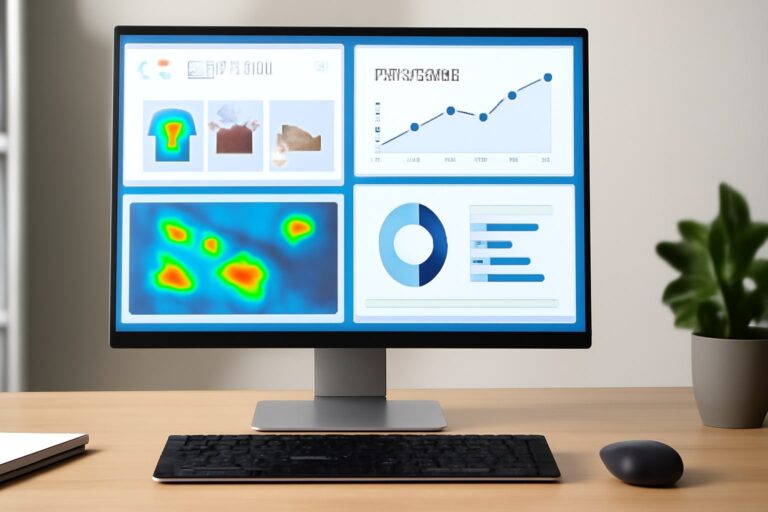Measure Digital Marketing ROI in 7 Steps: Proven Metrics, Tools & Insights #DigitalMarketing #ROI #Growth
Measure Digital Marketing ROI in 7 Steps: Proven Metrics, Tools & Insights
When you Measure Digital Marketing ROI, you’re not just crunching numbers — you’re unraveling the true story behind every click, every campaign, and every dollar spent. Think of it like listening to an old Bengali storyteller; each detail matters, every twist builds meaning, and when woven together, the narrative reveals whether your marketing is fortune or folly.
Why Measuring Digital Marketing ROI Matters
ROI as the backbone of marketing decisions
A business without ROI tracking is like a sailor in the Bay of Bengal navigating without a compass. To Measure Digital Marketing ROI is to light the path — helping you avoid costly detours and instead find profitable horizons. It tells you not just what works, but why it works.
Affiliate Opportunity: Many ROI analytics platforms, such as HubSpot, SEMrush, or even specialized ROI calculators, offer free trials. Signing up through partner links can provide small businesses a head start.
Common challenges marketers face when tracking ROI
Ask any marketer and they’ll confess — attribution is messy, tools are overwhelming, and sometimes results feel like monsoon clouds: heavy but unclear. If you don’t consistently Measure Digital Marketing ROI, you risk pouring money into channels that are deceptively appealing yet hollow in returns.
Step 1: Define Clear Marketing Goals
Aligning ROI goals with business objectives
Imagine opening a book without a plot. That’s what campaigns without goals look like. To Measure Digital Marketing ROI, you first need a framework: do you want brand awareness, direct sales, or long-term customer loyalty? Aligning objectives ensures your ROI reflects progress rather than vanity metrics.
SMART goals for digital campaigns
The SMART method (Specific, Measurable, Achievable, Relevant, Time-bound) transforms blurry intentions into precise targets. For example: “Increase organic conversions by 25% within three months”. Such clarity makes it easier to Measure Digital Marketing ROI because the outcome is tethered to a tangible benchmark.
Affiliate Hint: Platforms like Monday.com or Asana can help marketers track goal progress against ROI. Many affiliate programs reward referrals here.
Step 2: Identify Key Performance Metrics
Core ROI metrics every marketer must know
The heartbeat of ROI lies in numbers: CPC (Cost per Click), CPA (Cost per Acquisition), CLV (Customer Lifetime Value). If you aim to Measure Digital Marketing ROI, these metrics reveal efficiency and profitability. For instance, a low CPA compared to CLV signals a campaign that’s truly profitable.
Advanced KPIs for deeper insights
Beyond basics, consider engagement rate, customer churn, and social sentiment. These may not scream “ROI” outright but they whisper hints about long-term impact. To Measure Digital Marketing ROI holistically, you must embrace both direct and indirect indicators.
Affiliate Opportunity: Tools like Google Analytics 4, Mixpanel, or Kissmetrics often run promotional partnerships for users seeking deeper ROI insights.
Step 3: Choose the Right ROI Tools
Free vs. paid ROI tracking tools
Some tools are like handwoven Bengali shawls — functional and elegant, but limited. Free versions of Google Analytics let you Measure Digital Marketing ROI at a surface level. Yet for layered insights, premium platforms like HubSpot Marketing Hub or Marketo offer enterprise-grade precision.
Integrations with analytics platforms
The power multiplies when you sync CRM with ad platforms and automation tools. This unifies customer journeys, allowing you to Measure Digital Marketing ROI seamlessly. The integration itself is often an affiliate upsell for platforms like Zapier or Salesforce connectors.
Step 4: Apply ROI Attribution Models
Single-touch vs. multi-touch attribution
The old-school single-touch model is like crediting only the first verse of a Tagore song — it ignores the full melody. To Measure Digital Marketing ROI truthfully, multi-touch attribution distributes value across touchpoints. That means both awareness ads and retargeting campaigns get credit where due.
Which attribution model fits your strategy?
- First-touch attribution highlights discovery channels.
- Last-touch attribution favors final conversions.
- Multi-touch attribution captures nuance.
Marketers who experiment with different models ultimately Measure Digital Marketing ROI more accurately.
Affiliate Mention: Attribution software like Ruler Analytics or Wicked Reports offers trial periods with partner links.
Step 5: Calculate ROI Effectively
The basic ROI formula explained
The simplest formula:
ROI = (Revenue – Cost) ÷ Cost × 100
This formula may look clinical, but when you Measure Digital Marketing ROI, it becomes a compass guiding strategic allocation.
Practical ROI calculation examples
Imagine spending $2,000 on a campaign that generates $10,000 in revenue. ROI = (10,000 – 2,000) ÷ 2,000 = 400%. This isn’t just math; it’s the reassurance that your efforts are fruitful.
Affiliate Angle: ROI calculators offered by SaaS providers often serve as lead magnets, encouraging users to sign up for premium insights.
Step 6: Optimize Campaigns Based on ROI
Identifying low-performing campaigns
If ROI data exposes underperforming campaigns, don’t hesitate to pivot. Pausing a wasteful campaign is often as critical as launching a new one. To Measure Digital Marketing ROI is to learn when to cut losses gracefully.
Doubling down on high-return channels
ROI-positive campaigns are the stars of your strategy. Scaling them—whether through higher ad spend or broader targeting—can transform modest profits into business-defining growth. This is the art of letting ROI guide your ambition.
Affiliate Tie-In: Platforms like Google Ads, Facebook Ads Manager, and LinkedIn Campaign Manager frequently run partner credit programs.
Step 7: Present ROI Insights to Stakeholders
Building clear ROI reports
Executives prefer stories over spreadsheets. If you Measure Digital Marketing ROI with clarity, transforming data into narratives is easier. Visual dashboards, charts, and concise executive summaries can elevate your credibility.
Turning data into decision-making power
Numbers without context are like poetry without rhythm. When stakeholders see ROI contextualized, they’re more likely to approve budget expansions or strategic pivots.
Affiliate Suggestion: Data visualization tools like Tableau, Looker Studio, or Power BI can be monetized via referral programs.
Common Mistakes to Avoid in ROI Measurement
Overlooking hidden costs
ROI illusions happen when marketers forget overheads like staff time, software subscriptions, or creative production. To Measure Digital Marketing ROI truthfully, all hidden costs must be tallied.
Misinterpreting attribution results
Blaming the wrong channel or over-crediting one touchpoint can lead to poor strategic choices. The goal is to Measure Digital Marketing ROI with humility and nuance, acknowledging its imperfections.
Future of ROI in Digital Marketing
AI and predictive analytics for ROI
The future is predictive. Platforms already forecast outcomes by blending historical data with AI. Imagine being able to Measure Digital Marketing ROI before campaigns even launch.
The rise of customer lifetime value tracking
Marketers are shifting from campaign ROI to long-term profitability models. CLV reveals not just if a customer is profitable, but how long they remain so. In future, to Measure Digital Marketing ROI without CLV will be incomplete.
Affiliate Angle: Predictive ROI solutions like MadKudu or Optimove target enterprise clients but offer trial sign-ups with commissions.
Final Thoughts: Power Up Your Marketing with ROI Insights
Quick recap of 7 steps
- Define goals
- Identify metrics
- Select tools
- Apply attribution
- Calculate ROI
- Optimize campaigns
- Present insights
By consistently applying these, you don’t just Measure Digital Marketing ROI — you master it.
Action plan to implement today
Pick one channel, track ROI rigorously for 30 days, and adjust strategy. Small steps compound into big victories.
Affiliate Suggestion: Encourage readers to try free trials of ROI tools through affiliate links embedded naturally.
🔹 Bullet-Point Summary
- Measure Digital Marketing ROI to understand true campaign profitability.
- ROI tracking transforms guesswork into data-driven decision-making.
- Start with clear, SMART marketing goals aligned to business outcomes.
- Use core metrics like CPA, CLV, CPC alongside advanced KPIs.
- Choose ROI tools wisely — free options for basics, premium for depth.
- Apply attribution models (single-touch, last-touch, multi-touch) to assign credit.
- Use the simple ROI formula: (Revenue – Cost) ÷ Cost × 100.
- Continuously optimize: cut low-performing campaigns, scale ROI-positive ones.
- Build engaging ROI reports for stakeholders to secure buy-in.
- Avoid common pitfalls like ignoring hidden costs or misreading data.
- The future of ROI lies in AI-driven predictive analytics and lifetime value tracking.
- Affiliate and CPA opportunities can offset campaign costs.
- Measuring ROI builds confidence, clarity, and long-term growth.
🔹 FAQs
1. Why is it important to Measure Digital Marketing ROI?
It’s essential because ROI reveals whether your campaigns are profitable or just draining resources. By measuring ROI, you gain clarity on what’s working and what needs adjustment. With this knowledge, you can allocate budgets more effectively and maximize business growth.
2. What is the simplest way to Measure Digital Marketing ROI?
The most straightforward method is the ROI formula: (Revenue – Cost) ÷ Cost × 100. This provides a percentage that shows profit relative to investment. However, while simple, it should be paired with attribution insights for accuracy.
3. Which tools help marketers Measure Digital Marketing ROI?
Free options include Google Analytics and Meta Ads Manager. Paid solutions such as HubSpot, SEMrush, and Marketo provide advanced dashboards, attribution modeling, and automation. Choosing the right tool depends on campaign complexity and budget.
4. How often should ROI be measured?
Ideally, ROI should be tracked continuously, with weekly or monthly reports. Campaigns can shift quickly, so frequent evaluation allows marketers to act fast, pause underperformers, and scale winners.
5. Can small businesses Measure Digital Marketing ROI effectively?
Yes, absolutely. With free tools like Google Analytics and affordable CRM integrations, even small businesses can measure ROI. Starting small but staying consistent creates compounding insights over time.
6. What metrics should I track besides ROI?
Customer Acquisition Cost (CAC), Customer Lifetime Value (CLV), and Conversion Rate are critical. These help you understand not just campaign success, but also long-term profitability.
7. How does attribution affect ROI accuracy?
Attribution models distribute credit across different touchpoints. Using the right model ensures ROI reflects the entire customer journey instead of over-crediting one step.
8. What’s the biggest mistake marketers make with ROI?
The biggest mistake is ignoring hidden costs like creative production, staff hours, or software. This skews ROI and creates an illusion of profitability.
9. How can AI help Measure Digital Marketing ROI?
AI predicts performance by analyzing trends and customer behavior. Predictive analytics allows marketers to forecast ROI before campaigns even launch, saving money and improving accuracy.
10. Is ROI the only measure of marketing success?
No. ROI is critical, but it should be combined with brand awareness, customer satisfaction, and long-term retention metrics. Together, they provide a full picture.
11. How can ROI measurement improve stakeholder communication?
When you present ROI clearly with charts and storytelling, stakeholders understand impact quickly. This builds trust and increases chances of securing more budget.
12. Do different industries Measure Digital Marketing ROI differently?
Yes. For eCommerce, sales revenue and CPA dominate. For B2B, lead quality and CLV may matter more. Each industry tailors ROI frameworks to specific goals.
13. How do I link ROI to customer lifetime value?
By calculating how much revenue a customer brings over their entire relationship with your business, you connect ROI to long-term profitability instead of single campaigns.
14. What’s the future of ROI measurement?
The future is multi-dimensional: predictive AI models, advanced attribution, and lifetime value tracking. This evolution makes ROI more precise and actionable.
15. Where can I learn more about ROI strategies?
Explore in-depth insights on marketing, growth, and strategy at GetRizwan Blog. It’s a hub of practical tips and frameworks for professionals.
Discover More with These Expert Resources
To deepen your knowledge and strengthen your ability to Measure Digital Marketing ROI, explore these handpicked resources. Each link complements the strategies discussed above, and together they offer well-rounded perspectives from industry leaders.
Google Analytics Help Center – Learn step-by-step methods to track ROI and campaign performance with Google Analytics.
HubSpot ROI Calculator – Use this free calculator to estimate the return on marketing efforts and identify hidden opportunities.
Neil Patel’s Guide to Marketing ROI – Discover practical strategies and detailed examples for boosting your digital ROI.
Moz Beginner’s Guide to SEO – Since ROI depends heavily on visibility, this guide helps improve your SEO foundation.
Hootsuite Social Media ROI Guide – Because social media drives engagement, this guide shows you how to link efforts back to ROI.
Kissmetrics ROI Benchmarks – Analyze behavioral data and customer journeys to measure ROI with accuracy.
Statista Digital Advertising Data – For data-driven marketers, Statista provides updated benchmarks and insights across industries.
Forrester Marketing ROI Research – Access authoritative reports on marketing ROI trends and predictions.
Content Marketing Institute ROI Guide – Learn how to calculate and prove ROI specifically for content campaigns.
LinkedIn Marketing ROI Resources – LinkedIn offers expert insights into measuring B2B campaign success.
By visiting these trusted sites, you not only expand your understanding but also gain actionable strategies to Measure Digital Marketing ROI with more precision. Moreover, staying connected to industry leaders ensures you adapt to evolving trends faster than competitors.
🔹 Blog Recommendation
For deeper insights into marketing growth and performance strategies, I highly recommend visiting the GetRizwan Blog. It covers practical techniques, advanced analytics, and expert-driven insights that complement this ROI guide perfectly.
🔹 Service Links
Services: If you’re ready to implement proven ROI tracking frameworks, explore tailored solutions on the GetRizwan Services page. Professional support ensures your campaigns are structured for maximum returns.
Portfolio: Curious about successful case studies? Visit the GetRizwan Portfolio to see real-world projects where ROI-driven strategies delivered measurable growth.
Shop: Looking for tools, templates, or resources to jump-start ROI tracking? The GetRizwan Shop provides curated products designed to simplify marketing execution.
LinkedIn: To connect directly, engage with Rizwan on LinkedIn. Networking with industry professionals opens doors to ideas, collaborations, and fresh opportunities.







